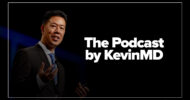This article is sponsored by Masterworks, the art investment platform.
Physicians face a dilemma.
U.S. physicians make $237,000 a year on average. That’s 4x more than most Americans. Very impressive if you ask me. But despite high earners, they still rarely achieve early retirement.
In fact, physicians usually retire at 69 years old. That’s seven years longer than average.
While you’re most likely maxing out your IRA and allocating to traditional, safe-haven assets, the Fed’s recent interest rate policies, record-high inflation, and geopolitical conflict could cause a recession, delaying your retirement plans even longer.
Charles Schwab reports that Americans need $1,900,000 to retire. But in today’s economic environment, how can you be sure your wealth will be protected, let alone grow? Luckily, many physicians have discovered a new unconventional strategy that can potentially help you invest your way to retirement. It’s called: The Physician’s Gambit.
What is the Physician’s Gambit?
The Physician’s Gambit involves diversifying with an alternative asset class typically only found in some of the world’s HEALTHIEST portfolios. Consider it like a blue zone of assets.
One that’s supposedly so good, “Wall Street really doesn’t want you to know about it.”
Not bitcoin, not real estate, not even gold.
That may be because some alternative assets have the potential to deliver unparalleled returns. It’s no wonder some call it the best-kept secret in the investing world.
As a whole, alternative investments make up about 5% of the average investor’s portfolio. Whereas the average millionaire has roughly 26% in alternatives. Clearly, this is the difference-maker.
And while this particular alternative asset was previously off-limits to 99% of investors, physicians have gotten access to this exclusive investment thanks to a little-known law called the JOBS Act. It opened up access to a slew of new alternative investments including this one.
This may shock you, but this alternative asset is actually art. Sounds crazy, right? In reality, it couldn’t be more obvious.
The “0.1% of the 0.1%” have used art to grow their fortunes and increase their status for centuries. After all, art has been the bedrock in the portfolios of America’s wealthiest individuals.
Jeff Bezos, Bill Gates, and Oprah Winfrey have built collections valued in the hundreds of millions. And before them, the Rockefellers amassed the world’s most valuable art collection ever sold—a staggering $835M.
A “powerful financial asset”
And while most people think art is nothing more than painting on a canvas, the reality is … it could be one of history’s finest investments.
According to JP Morgan, art is a “powerful financial asset.”
For example, Picasso’s painting Marie-Thérèse, originally sold for $6,800,000 in 1997. Last May, that same painting sold for $103,400,000. That’s an increase of more than 1,400% from its original value.
You don’t have to be an art expert to understand how incredible that is. And while those numbers are amazing, this is all a part of a larger trend. You don’t even need to take my word for it; look at the experts.
Citi reports that contemporary art prices appreciated by 12.9% annually on average.
That’s impressive. Especially considering the economic boom we experienced over that same period.
It’s no wonder 85% of wealth managers believe art has a place in their wealth management offerings.
We’re currently seeing inflation around 5% — still well above the Federal Reserve’s 2% target.
Traditionally, people turned to traditional assets like gold or real estate to keep inflation from eroding their wealth.
But Bank of America’s chief investment strategist believes art could offer a high level of protection from inflation.
As you can see below, contemporary art’s appreciation jumps to 13.5% when inflation is above 3%.
Resilient in downturns
Historically, fine art does well during times of economic uncertainty. According to Citi, art has one of the lowest correlations to the stock market. This makes art a potentially useful hedge against market volatility.
In other words, when stocks dip, your art investments may not.
Case in point: During the first seven months of 2020, contemporary art outpaced every other asset class, including stocks, real estate, and even hedge funds.
This explains why the demand for art jumps during recessions. When stocks plummeted in 2008, money flowing into masterpiece art increased by nearly 4x.
And today, even with the whispers of a recession circulating around the country, an expert told the Wall Street Journal, “the art market is carrying on as normal.” In fact, Paul Allen’s collection recently sold for a record-breaking $1.5 billion.
Once you take all of this into account, you understand why many billionaires allocate 10 to 30% of their portfolios to art.
Diversifying your portfolio with art
With art, like other asset classes, the best investments are often the most expensive. Because most paintings that tend to have the biggest returns have price tags north of $3 million, you’d need generational wealth to add art to your portfolio.
And once you buy the entire painting, you’d actually have to store the darn thing.
The workaround? There’s a little-known — and incredibly smart way — for everyday people like you and me to invest in contemporary art. One that lets you do so for a fraction of the cost.
Masterworks, the alternative art investment platform, destroyed this high-cost barrier to entry. They’ve made investing in this $1.7 trillion asset class simple. Instead of buying entire paintings, you can invest in shares of multiple paintings.
How it works
Masterworks has a world-class research team that does extensive data analysis to find quality paintings for investors. Experts have compared their database to a “Bloomberg terminal for art.” They’ve figured out that some works have more predictable price appreciation.
When they’ve identified a work of art that’s likely to appreciate, they buy it and qualify it with the SEC. After that, they can issue shares on their platform.
You can then buy an equity stake in that painting. Masterworks holds the piece until it appreciates, and when they sell, you get a prorated portion of the profit. And you have the option to sell your shares on their secondary market at any time if you’d like as well.
It’s that simple.
Since 2019, Masterworks has resold 13 offerings, with the last few delivering 10%, 14%, and 35% in net annualized gains to investors. Past performance doesn’t guarantee future results, but this is still quite impressive so far.
So, you’re probably wondering, why am I only hearing about this now?
To date, Masterworks has securitized over $700 million dollars worth of art, and over 675,000 investors have signed up. This year alone, they’re planning to reach over $1B worth of art on their platform.
And have been featured in the Wall Street Journal, Bloomberg Forbes, and other major publications.
Most people don’t get access to this platform right away. New clients are put on a waitlist, but KevinMD readers who use our link skip straight to browsing the current offerings.
All you have to do is click here to skip the waitlist and invest in multimillion-dollar paintings.
P.S. Masterworks has launched a new fund-like product called the “diversified art portfolio” or the “DAP” for short. The DAP lets you invest in a pool of 60 to 80 paintings that their team handpicks for you. But you have to be an accredited investor to access this feature.
This article is provided for informational and educational purposes only. It is not intended to be investment advice and should not form the basis of an investment decision.
Masterworks is the first platform for buying and selling shares representing an investment in iconic artworks. Build a diversified portfolio of expertly-vetted works curated by our industry-leading research team. Please review Masterworks’ disclosures.





























![Sibling advice for surviving the medical school marathon [PODCAST]](https://kevinmd.com/wp-content/uploads/Design-1-190x100.jpg)

![Understanding the unseen role of back-to-school diagnostics [PODCAST]](https://kevinmd.com/wp-content/uploads/Design-3-1-190x100.jpg)
